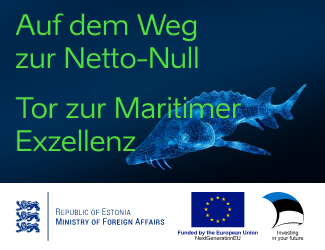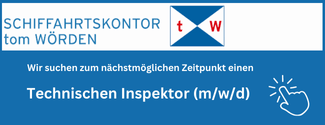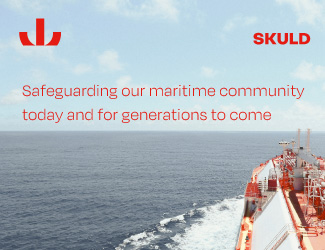Niche markets that are getting smaller and smaller call for new ideas for the European shipbuilding industry. Netherlands-based CIG group bets on a »flexible shipyard«-strategy.
In standard shipbuilding Asia has outrun Europe for a long time. But although the continent’s shipyard community has lost a[ds_preview] lot of members it has not vanished. While »normal« commercial shipping suffers from a long and severe crisis and tonnage overcapacity is weighing on the markets, a slow-down in orders forces even the Asians to look for new opportunities in niches. Due to costs, many special-purpose vessels are already being built in the East and even the profitable cruise ship market is not exclusively tied to Europe anymore. Accordingly, competition is getting tougher.
This situation requires new approaches, niches and co-operations as well as efficient processes in shipbuilding. Among those who have turned onto this path is the Dutch CIG group. Its business model is based on producing complete building kits in advanced stages of sub completion or the cutting and 3D forming of steel. In Groningen, Netherlands, and Stralsund, Germany, the company runs two production facilities. The clientele comprises 125 shipyards that are mainly based in the Netherlands and Germany, including reputable companies such as Lürssen and Abeking & Rasmussen.
»CIG consists of several companies, two of them are CIG Centralstaal in Groningen and CIG Ostseestaal in Stralsund with a capacity of 100,000t of steel, which are converted into shipbuilding kits,« explains Technical Director Maarten Sickler. The purpose is to cooperate with shipyards in order to become more efficient, to reduce the man-hours as far as possible. »If a yard had all the necessary machines for cutting and bending on its own, it would not use them all the time, because there are not enough vessels in the orderbook. We feed the welding line.« With a proper engineering, all the pre-cutting can be done at CIG Centralstaal, which is running continuously. This is the core business of CIG and works in two shifts. According to Sickler, even in these hard times of shipping and shipbuilding, CIG is producing up to 70,000t per year at their facilities in Groningen and Stralsund. Not only for the maritime sector, but also for the architecture division and renewables division.
Because CIG and the traditional shipyard industry depend on each other in a certain way, the relationship to yards is »on highest level«. »They cannot survive without the steel supply, and we cannot survive without them building vessels,« Sickler adds. »When they calculate their business, they see that it is better to buy the steel kits or building kits from us.« An advantage of CIG is that it gets a good price from the steel mills because of the volumes it buys. »It also allows smaller yards with less experience to acquire projects with higher volumes or bigger sizes than they used to,« the Director says.
The steel kits have the biggest share in the CIG group. But the company is building vessels itself, too. CIG uses a strategy, which is meanwhile well-known and important to stay competitive: ship building at flexible locations. One example is the modern pipelayer »Ceona Amazon« of German Lloyd Werft. The hull was built at Crist Shipyard in Poland, then shipped to Bremerhaven for further works before it was transported to Huisman in the Netherlands where final equipment works were carried out.
No own shipyard
But there is one crucial difference. Whereas the Lloyd Werft with its fixed location was responsible for the cable layer, CIG itself is no shipyard. The Dutch are the sole contactor for shipowners and work as a project management organization. »We can build in Germany, the Netherlands or in Poland. Our shipyard is flexible,« Sickler explains.
CIG offers the total shipbuilding value chain since 2007. »We wanted to add value to traditional building kit customers by generating section building capacity as we felt that there was a need for this capacity. Over the years we have grown into a strategic partner for combinations of cost-reducing and industrial shipbuilding methodology where the ROI and time to market are key. We offer intelligent designs, support in finance and advise and experience throughout the process. However, our main focus is still on the building kits and the 3D forming of steel.«
CIG designed vessels for external clients, for example CombiDock of Harren & Partner and its vessels built by Lloyd Werft. This finally led to own shipbuilding projects, but still without an own shipyard.
Sickler explains, »We convert the drawing into kits, put them on a truck, drive to Poland (Szczecin), where we have three partner yards. There the kits are converted into a hull that is then towed back to the Netherlands, where we continue building the vessel with engines, electrics and so on.« The locations for this process are not fixed. For example, for one newbuilding space was rented in a small village in the Netherlands called Urk. »When we don’t need space, we don’t rent it, which makes it economic,« the Director says. For the projects CIG has several independent partner companies, for example engine room manufacturers. Those are integrated in the building team and are responsible for their products.
According to Sickler, building ships by this procedure reduces the amount of labour hours by 20 to 25%, which is an important factor for price calculations. Another advantage of the chosen structure is the ability of CIG to tap into different financing networks in the various countries, which can lead to attractive financing solutions for CIG’s clients. Sickler confirms, »This is very good for the local industries and the customers. And it works«.
With this strategy, CIG is able to build all kinds of vessels in different sizes. »Dredgers, OSV’s, special cargo, general cargo, container, it doesn’t matter. This trategy is very good for non-standard vessels, where you have to put in knowledge. Otherwise the yards wouldn’t need us. The way you built ships is always the same, you just need in-depth knowledge for each segment. This knowledge is embedded in our organization,« the Director emphasizes.
Own projects
A prominent example of an »own« newbuilding is the OSV »Acta Orion«, working for Dutch company Van Oord, delivered in November 2015. The DP2 vessel of 108 by 16m is based on the 6000 GC-E design and was optimized for operations in challenging conditions. It was pre-built in Poland and then towed to Harlingen in the Netherlands.
Of course, CIG is dependent on the global shipping markets, which are quite tough, right now. The company is looking for new projects. »But as we do not have to fill a yard, we can take our time to calculate and design,« says Sickler.
Steel business takes the major part. Here, growth is possible, he thinks. »We want to grow, but we don’t see that happening in shipbuilding alone. The market is down. We still want to achieve 100,000t a year and to get more market share. So we are looking into other steel businesses like construction, industry components or architectural structures. We want our customers to become more competitive with our building kits, whether it is used for shipbuilding, architecture or industry components.«
Michael Meyer
















